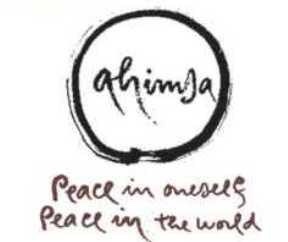Parenting in today’s world is hard. I know people say this all the time, but it has recently hit me pretty hard. I have an almost-3-year-old and 3-month-old baby. The hard part: living up to social-media mom standards.
Screen time? Taboo. Formula feed? Breast is best. Breastfeed in public? Judgmental stares. Elective C-section? Not the way nature intended it. Natural birth? Show off.
Y’all… we can’t win.
Let’s take a moment to lift each other up. Be truthful when you speak to your friends about your family. Ask for advice. Be a good listener. Start to let go of that judgement on yourself and others.
Ahimsa… the yoga of motherhood
Ahimsa in yoga is non-violence or non-harming. Non-violence towards ourselves and others helps us to clear our minds of toxic thought patterns and allow positivity to flow in.

Meditation…
Meditation is a great way to practice ahimsa. Meditation has been proven to assist us in ending the patterns in our lives that we keep repeating over and over. Negative self-talk, blaming others for things that go wrong in our lives, and of course judging ourselves and others are all things that can become amplified as we sit in meditation. Through meditation we learn to identify and observe these thoughts then gently let them go.
I am committing myself to meditating for at least 2 minutes a day even if it means meditating with a baby strapped to me because it’s the only way he will nap (practicing ahimsa towards myself here). I’m starting with 2 minutes and working my way up to 30 minutes to 1 hour and being okay with the 2 minute days mixed in between.
Loving kindness meditation…
A loving kindness or metta-meditation helps us to redirect those negative thoughts towards ourselves and others and replace them with positive thoughts.
To do this meditation first repeat these phrases towards yourself, then direct them towards someone you have a positive relationship with, then to a neutral party, next to someone with whom you have a challenging relationship, then finally to all beings everywhere.
Find a comfortable position to sit in and close your eyes. Start by noticing your breath. Don’t change it, just notice; is it deep or shallow? Slowly start to deepen your breath. Inhale: fill your belly, ribs, then chest. Exhale: chest goes down, then ribs, then belly. Take about 3 rounds of deep breaths then allow your breathing to become relaxed and easy. Move your Minds-Eye from the breath to your body and perform a scan of the body, from the head to your toes, letting go of holding, effort and judgement. Repeat the following phrases in your head several times in a gentle way. Allow your mind to rest on the statements.
Loving Kindness to Yourself: May I be happy. May I be healthy. May I be free from pain and suffering.
Loving Kindness Towards Someone who has had a Positive Influence in your Life, then a neutral party, then towards a challenging person: May you be happy. May you be healthy. May you be free from pain and suffering.
Loving Kindness Towards all Beings: May all beings be happy. May all beings be healthy. May all beings be free from pain and suffering.
Notice as you perform this metta-meditation over time if your natural thought patterns start to shift from negative to positive. Negativity and judgmental thoughts won’t just *poof* go away, but you may start to see loving thoughts edging in. Also, try practicing ahimsa as you scroll through your social media pages. Non-judgment on your peers, non-judgement on yourself. When you find yourself judging or comparing simply think, “May you/I be happy, healthy and free from pain and suffering.” Changing how your mind navigates the world (and the internet) is very important to living with ahimsa.
Peace & love,





